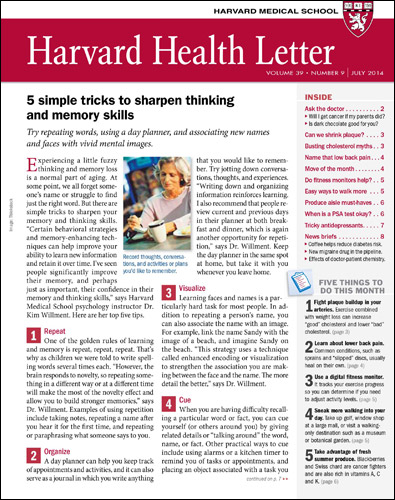Do employee wellness programs actually work?

It seems like a question that's not worth asking. If you offer employees wellness programs such as fitness centers, nutrition counselling, and stress reduction, and you charge little or nothing — or even offer financial incentives — surely it will improve the participants' health. And surely the employer would see a return for investing in these programs, in improved worker productivity and decreased absenteeism.
What does the research say?
And yet that's not what researchers reported in the April 2019 edition of JAMA. They analyzed data from nearly 160 worksites employing nearly 33,000 people. About 10% had wellness programs that addressed topics such as exercise, nutrition (including meetings with onsite registered dietitians), and stress. When comparing employees with and without a wellness program at work over 18 months, those who had a wellness program had significantly higher rates of self-reported exercise (70% vs. 62%) and weight management efforts (69% vs. 55%).
Despite these significant (though small) differences, those with a wellness program and those with no wellness program had similar
- self-reported health behaviors and outcomes (such as amount of regular exercise, sleep quality, food choice, and 24 others)
- results on 10 health measures (such as blood pressure, cholesterol, and body mass index)
- use of medical resources (including medical spending and medication expenses)
- absenteeism and job performance.
These results call into question whether the assumptions about wellness programs at work actually deliver on their promise.
Is this the end of employee wellness programs?
As noted by the authors of this study, this research will not be the last word on how effective employee health programs are. Reasons for this include:
- The results might have been different if the study had been performed at a different type of workplace, with different types of wellness programs and different types of workers.
- The worksites without a wellness program had relatively high rates of self-reported health behaviors. Workplaces with lower rates might benefit more from a wellness program.
- The study lasted only 18 months. A longer-term study might find more benefit for the wellness program.
So, while the assumption that wellness programs actually lead to improvements in the health of workers and lower absenteeism may be called into question, we need additional research before concluding that all of these programs are useless.
What's an employee to do?
If your employer has more than 200 workers, there's a good chance that you have a wellness program offered through your work: about 80% of larger companies have these programs. Even at smaller companies, more than half offer them. If you do have such a program where you work, take advantage of it! One study found that even with financial incentives, employee participation increased only modestly (from just under half with no financial incentive to 59% for a $100 reward and 63% for a $200 reward). Learn what they have to offer, participate with enthusiasm, and see if it improves your health, mood, work habits, or performance.
While this study suggests the impact may be small or nonexistent, some programs may be better than others, and some people (perhaps you!) may get more out of them than others.
If you don't have a wellness program at work, design your own. Talk to your doctor about what you can do to improve your health. Perhaps your focus should be on exercise if you're currently inactive. Or maybe your diet, sleep, or mood could be better. Your doctor may refer you to a physical therapist or trainer, dietitian, or psychotherapist who can help in ways similar to workplace wellness programs.
What's next?
I think we'll see more research looking at the effectiveness of employee wellness programs. Hopefully, this will include studies with older or younger workers, and different types of programs that encourage participation in different ways (such as financial rewards or a break on health insurance premiums). You can bet employers will take note of this study — after all, workplace wellness programs are part of an $8 billion industry that is likely to lose steam if there is truly little return on this hefty investment for employees or employers.
Follow me on Twitter @RobShmerling
About the Author

Robert H. Shmerling, MD, Senior Faculty Editor, Harvard Health Publishing; Editorial Advisory Board Member, Harvard Health Publishing
Disclaimer:
As a service to our readers, Harvard Health Publishing provides access to our library of archived content. Please note the date of last review or update on all articles.
No content on this site, regardless of date, should ever be used as a substitute for direct medical advice from your doctor or other qualified clinician.













